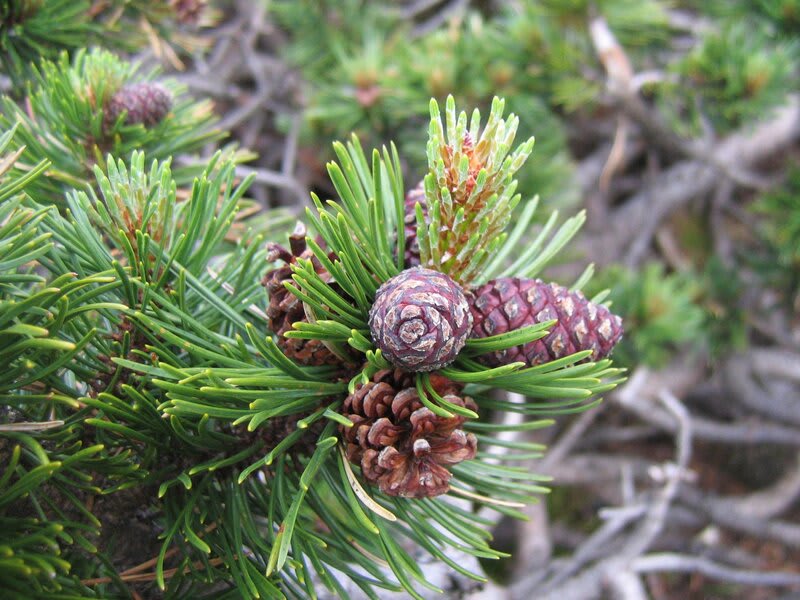
🌿 Morphology
🌞 Growing conditions
🌍 Origin and family
🌾 Uses
Warning: Despite the care taken in writing this sheet, it is essential to cross-reference sources before using or consuming any plant. When in doubt, consult a qualified professional
Permaculture uses
Pinus mugo is primarily used for erosion control on slopes due to its extensive root system. It can also be used as a windbreak or screen. The resin can be used medicinally. Some cultivars are used ornamentally. The pine nuts are edible but small and not commercially significant.
Permapeople description
Dwarf mountain pine. A shrubby pine, typically 1–3 m (3–10 ft) tall, though occasionally up to 5–7 m (16–23 ft) tall.
Botanical description
Pinus mugo is a species of pine native to high elevation habitats from the Pyrenees to the Balkan Peninsula. It is a shrub or small tree, typically reaching 3–6 m (10–20 ft) tall, but occasionally up to 13 m (43 ft). It is variable in form, from erect, multi-stemmed shrubs to low, prostrate forms. The leaves ('needles') are 3–8 cm (1 1/4-3 1/4 in) long, dark green, and held in bundles of two. The cones are ovoid-conical, 2.5–8 cm (1–3 1/4 in) long, glossy dark purple when young, maturing brown 18–20 months after pollination. The seeds are 4–6 mm (3/16-1/4 in) long and have a 12–20 mm (1/2-3/4 in) wing.
Companion planting
Pinus mugo can have allelopathic effects on some plants, inhibiting their growth due to chemicals released from the needles and roots. It generally tolerates a wide range of soil conditions and can grow in association with other plants adapted to similar environments, such as heathers and certain grasses. Avoid planting near plants sensitive to acidic soils or those that require high levels of nutrients.
Propagation methods
Propagation is typically done by seed. Cuttings are possible, but rooting can be difficult. Grafting is sometimes used for specific cultivars. Layering is also an option for low-growing branches.
History and traditions
Historically, Pinus mugo resin has been used in traditional medicine for its antiseptic and expectorant properties. It has also been used to treat respiratory ailments. In some cultures, the boughs are used for decorative purposes during winter holidays.
Usage calendar
Seeds are typically sown in spring or fall. Cuttings are best taken in late fall or winter. Planting is best done in spring or fall. Cones mature in late summer to fall. Pruning, if needed, should be done in late winter or early spring before new growth begins.
